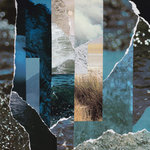

Tell me about your work as a visual artist.

I like writing gay Somali characters who are defiantly proud of who they are regardless of the difficult circumstances they find themselves facing. When she’s sexually harassed by one of her patients, she doesn’t crumble into self-pity: she decides to teach him a lesson.Īll my stories are threaded together by the gay experience. I have never been interested in victimhood narratives, so in stories like ‘Pavilion’, which was published in Prospect, the protagonist is a hard-boiled, six foot Somali transvestite who works in a mental hospital. I started writing short stories about the gay Somali experience that had a deeply humane, universal outlook. I was coming to terms with my sexuality as a gay man and I wanted to write about these experiences. But I didn’t want to emulate what they were doing, and I felt that in order to write honestly I had to examine my own life and write about the issues that mattered the most to me. At this point I was fascinated by Alice Munro, Edwidge Danticat and David Sedaris. In 2008, after recovering from another health setback, I began to write short stories. This has to do with the fact that although the culture is a rich and fascinating one, it’s ultimately dominated by a conservative outlook that resists making space for different world-views, which is such a shame because the people are brilliant storytellers. In Somali culture, sexuality is a tricky topic. What themes/concerns do you address in your writing and how do you do this? I took that to heart and began to actively pursue a career as a writer. Toni Morrison once said that she first started writing because there were no books that represented her story. I found myself thinking, ‘Where are the Somali writers?’ Sure we have Nuruddin Farah, who’s a legend, but beyond that there was no one I could look up to as a creative role model from my community. I was beguiled by how these writers were playing with the English language, bending it to fit their own vision. I was heavily into Salman Rushdie’s Midnight’s Children, Arundhati Roy’s The God of Small Things, Manil Suri’s The Death of Vishnu, and basically any writer from India. I was so traumatised by the experience that I didn’t speak for nearly six months. After that, making clothes seemed like such a frivolous pursuit. My doctors diagnosed me with psychosis and I spent nearly a year in hospital. My ambition to study fashion was cut short when I ended up having a nervous breakdown and was hospitalised. My parents took this in their stride and actively encouraged my interest in becoming a designer and we moved to London. My first love was fashion design, and my biggest ambition was to be ‘The Somali Gianni Versace’. I was a really creative kid growing up in a very religious Muslim household. Tell me a bit about your background and how this has informed your writing? He is deputy editor of Scarf magazine and will release his debut collection of short stories in 2013.

Listen to it loud.Diriye Osman is a British Somali writer and artist based in London. In fact getting around to actually put my thoughts down has been a difficult task to accomplish.” – Last on Our Listĥ years after Deathconsciousness, Dan and Tim return with The Unnatural World, a tightly-wired exploration of the post-punk, industrial, and doom-fusion sound that they helped to popularize. “‘The Unnatural World’ by Have a Nice Life is quite possibly the most overwhelming album to have come out this year. “It’s literally flawless.” – Anti-Gravity Bunny The soundtrack to a slow sink into the ground.” – Decoy

#Have a nice life the unnatural world zip plus#
Plus drone, plus doom, plus cold-wave, plus post-punk, wintry yet intimate. “Have a Nice Life have perfected a sort of industrial shoegaze. “hums with the overblown quiver of industrial percussion, the gasps of desperate reverb, and distant, elongated, harmonized vocals.” – Alarm Magazine “For such dark music, The Unnatural World is addictively melodic. “…massive in its scope, with production that reflects the heft of the material more than ever.” – NPR Instead it moves, and moves others with it.” – Pitchfork “Sinuous instead of rigid, bloody instead of embalmed, the album refuses to be frozen in time or place.


 0 kommentar(er)
0 kommentar(er)
